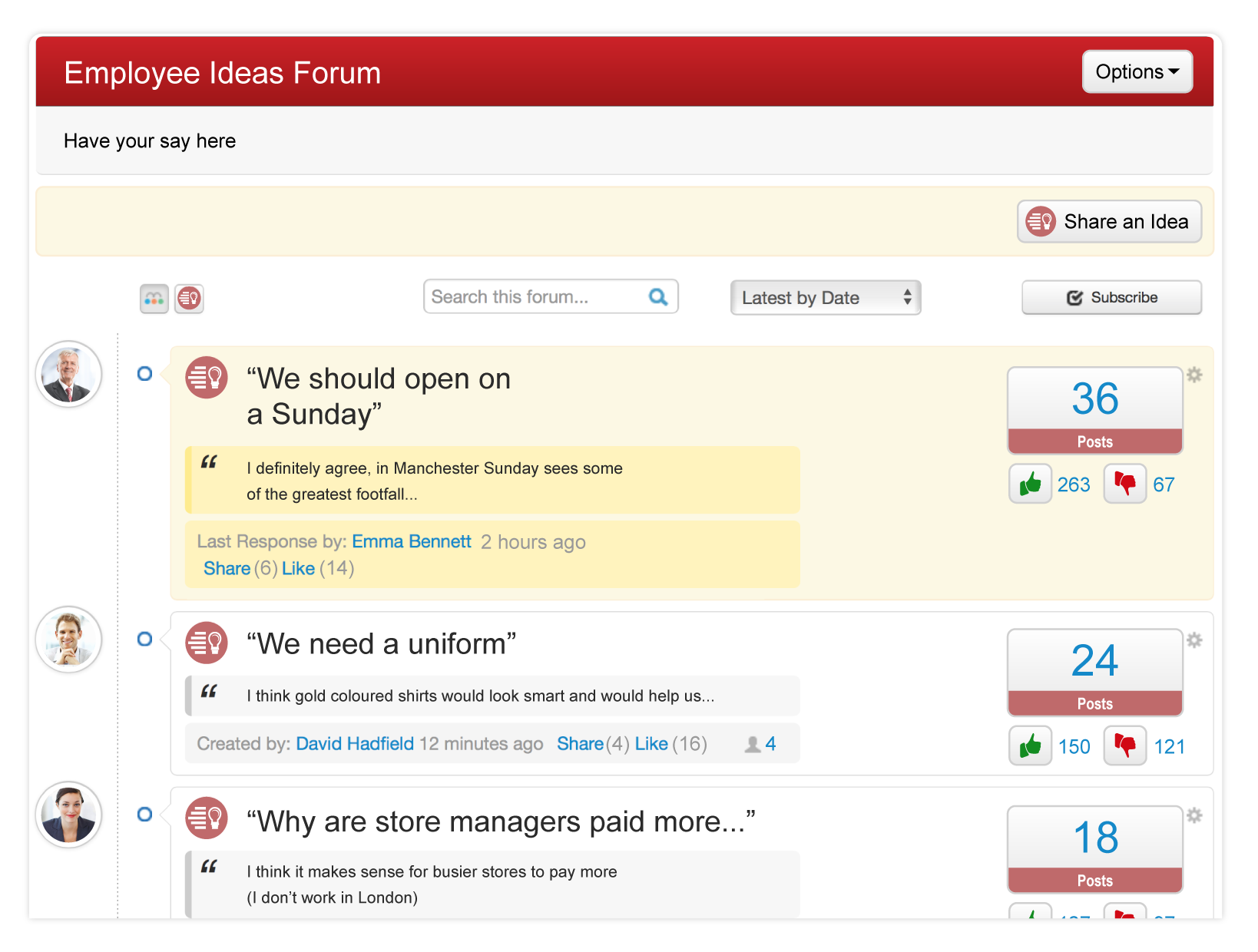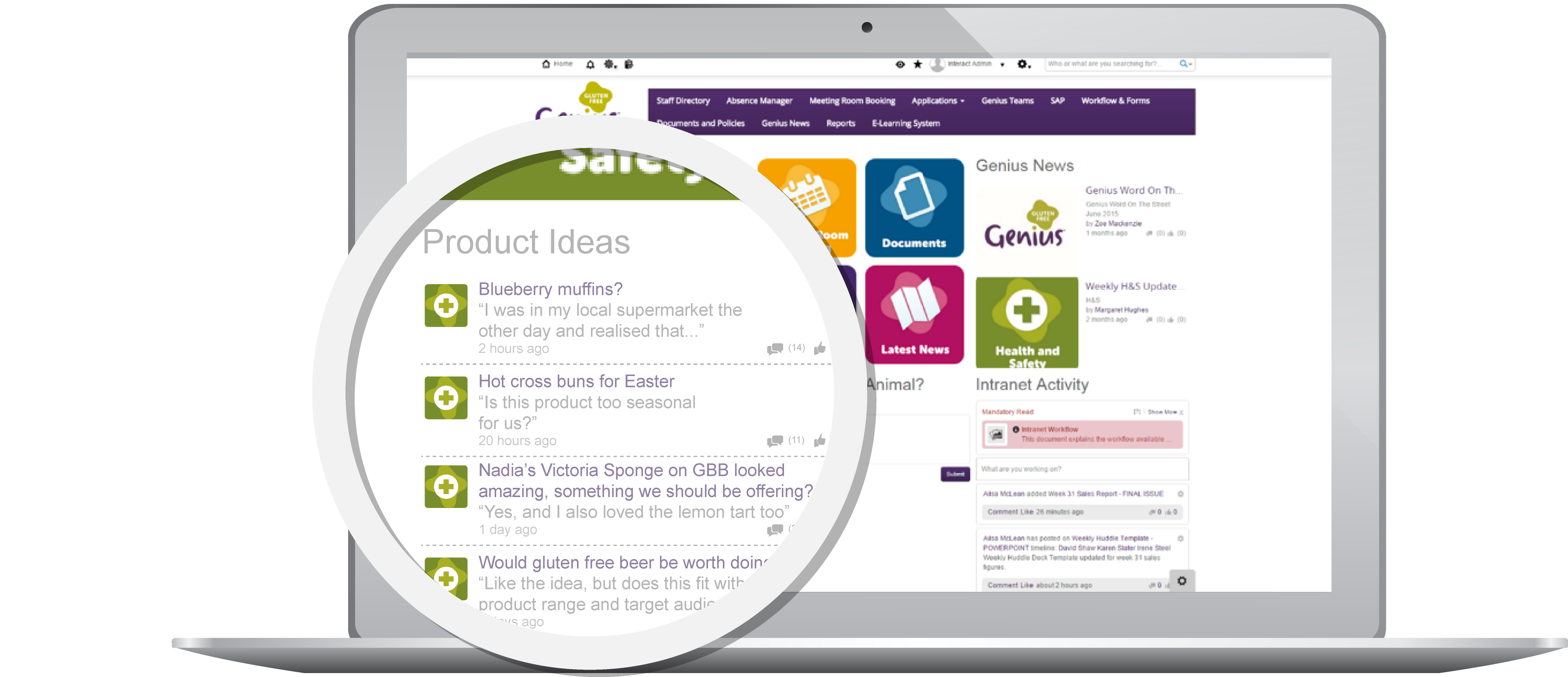6 ways to foster innovation in your business
Innovation in organisations can develop in two formats, the type that solves existing problems and the type that comes like a ‘bolt from the blue’; the idea that when implemented generates millions in revenue or saves millions in cost efficiencies.
Both types of innovation are important to a healthy organisation and both fortunately stem from the same basic components: communication and trust. Here are some practical ways you can foster innovation and reap the benefits within your organisation.
1) Open Communication is Vital
Successfully fostering innovation at work requires communication, psychological safety at work, and the free flowing of ideas across your organisation. It’s important that the conversation and brain-storming is seen to travel both up and down the corporate hierarchy.
Providing a central place for communication across your organisation, such as a forum or area on your intranet and encouraging all sections of the business to discuss the problems the organisation faces, will provide a platform for this communication.
Ensuring that positive feedback is given to all those who contribute, regardless of whether the idea is used or not will build trust in the sharing of innovation and effectively motivate and engage employees, making them feel part of the process, allowing them the opportunity to suggest ideas and possible solutions before an important decision is made.
For really creative ideas and problem solving, it is often very beneficial to encourage communication between different departments. Sometimes, seeing a particular problem or opportunity from outside its direct influence can be all it takes to generate a plethora of great ideas. This cross departmental communication will also have the added advantage of fostering trust and reducing the tendency of departments to blame each other for problems. After all, if everyone is working together, its everyone’s problem to solve.
Ragan Award winners ‘Dollar Finance’ did this to incredible effect by using an ‘Ideas Forum’ in their intranet to ask employees whether they should have uniforms, whether they should open on Sundays and many other new ideas employees had. The best of these ideas were discussed at global board meetings, recorded and then shared back on their intranet – the whole process was transparent. This in turn made changes quicker, easier and more universally adopted as everyone understood where they had come from and that the reasons and rational had been discussed by all.

2) Everyday Sharing of Creative Ideas
Having ideas should not be an ‘occasional’ thing.
If you want your employees to be creative, it’s like a muscle they need to stretch and exercise regularly. Having a limited burst of interest in innovation is not going to encourage the process to persist. It must be built into the day-to-day culture of your organisation.
Supervisors should be encouraging those they manage to continually share their ideas with management and each other. There are lots of practical ways you can encourage this, such as suggestion boxes, open door policies, have time at the end of department or team meetings to share ideas, or make it easy for people to add ideas to your intranet.
You may find it beneficial to use the peer-to-peer Rewards system on your intranet for managers and colleagues to show their appreciation of a particular idea or perhaps the fact that they have contributed at all, thus driving forward people’s interest in expressing their innovations.
3) Creativity can Rarely Be Forced
Making employees turn up to an ‘innovation meeting’ at certain times and present ideas is unlikely to actually result in anything meaningful. The human brain is often less creative under pressure, and trying to insist that people are ‘innovative’ at a time and place that ‘suits’ will replace any desire to innovate with a fear of not performing at the ‘right time’.
You would find it more productive to give employees lots of options to express any ideas they do have and encourage them. Ensuring that the organisation as a whole is informed about what other departments and management do, through blogs or newsletters is an important first step. People are not going to start thinking about a solution to a problem they are unaware exists. It is often easier to innovate around a problem that needs fixing, and once that creative muscle is used, innovation in its purest form is easier to access.
You might also find it effective to reward (with prize money, gifts or chances at advancement) any successful ideas. Make sure that you shout about these successes on your intranet, as this too will encourage further innovation. Having the implementer of the idea blog or create content on the intranet about how they took the innovation and made it work for the organisation, perhaps with a video or pictures showing the effect of the innovation. This follow up of the implementation of ideas gives people the full circle of transparency in the process, fostering trust that their efforts are appreciated.
4) Consider the Quiet Ones
Not everybody will want to stand up in a meeting to tell everyone their idea, for some people the very concept makes them feel ill, but innovation needs to come from everyone to be truly groundbreaking.
So how to include everyone?
If you have several different incentives to draw out creativity and innovation, this is not a difficult problem to solve. Simply provide a submission method that would be acceptable to shy employees, such as an online form that gives them the option to present their idea. These ideas can then be circulated, anonymously or posted on the Intranet where they could be then reviewed by other employees.
5) Keep Employees in the Know
If your employees are disconnected from the organization’s management and direction, they are not going to have a desire to innovate. A general feeling of helplessness and dissatisfaction will prevail.
Addressing this requires ensuring that all employees are kept aware and up-to-date on the firm’s strategies and challenges. Regular updates from management should be the norm, perhaps with blogs, or video interviews posted on the intranet. Your employees should never hear about a major change in direction or problem from the news or the organizations public facing website.
Companies with more engaged workers also register a median of 10% higher customer ratings, 22% more profits, a 21% increase in productivity and 41% fewer defects (i.e. more quality) when compared to bottom-quartile units. These results can be found in Gallup’s 2013 State of the Global Workplace study.
In short the more people know, the more then feel involved and valued and the more you can invite them to offer their input. This passionate input can then potentially generate more innovation. Being able to participate and contribute to the organisation’s management will also allow them to see others innovate around them, giving those who are unsure a path they can follow. Having Ideas Forums and encouraging management to blog about the challenges they face opens up a platform for the free exchange of ideas and brainstorming on an organisational level.
It is quite conceivable that feeling engaged, involved and passionate about their work will have a powerful effect on motivation, as people are more likely to see a project or process through to completion if they were involved and given the chance to offer their input at the beginning, because now they feel invested.
6) The Importance of Innovation
For many, this push towards innovation will be a culture change, possibly a big cultural change that may make some uncomfortable.
Before the initiatives are introduced make sure everyone is aware that this is a positive step and that you want to hear everyone’s ideas. Explain why you are introducing this innovation into your organization, what you hope to achieve with it and what benefits you envision to the profitability and competitiveness of the organization.
Allow people to adapt at their own pace, but encourage any evidence of innovation whilst guiding employees towards the level of innovation you want.
For example, food manufacturer, ‘Genius Gluten Free’ handle their entire product innovation lifecycle via forums and electronic forms on their intranet. This allows the process of idea to creation through to being in stores to be reduced to less than six months encompassing ingredient sourcing, commercial viability, health and safety and costing.
Incredibly they built this process and rolled out their intranet within four weeks of purchasing the software, ensuring their had the platform in place for involving everyone in the evolution of their products.

